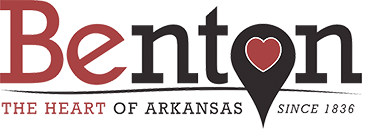Central Fire Station
Phone Numbers
(501) 776-5960
Hours
Main Office Monday to Friday 8:00am - 4:30pm
Fire Safety Tips
What to do in case of fire.
 Know and practice two (2) ways out of every room in your home.
Know and practice two (2) ways out of every room in your home.- Stay Calm. Sound a Warning
- If you awaken to a smoke-filled room, crawl below the smoke to safety. Check the doors to see if they are warm. A warm door may mean that there is a fire on the other side. Use an alternate exit, if possible
- Get out as soon as you discover a fire; do not try to fight the fire.
- Once you are out of the house, STAY OUT; do not attempt to enter a burning home to gather possessions left behind.
- Immediately dial 9-1-1, preferably from a neighbor's phone.
- Get everyone out; wrap children in blankets if necessary-don't take time to get dressed.
- Close the doors behind you as you evacuate. This will slow down the fire.
- If your hair or clothing should catch on fire, smother the flames with a towel, blanket or other thick material, or stop, drop and roll out the flames.
What to do if your clothes catch on fire.
- If your clothes catch on fire, stop, gently drop to the ground, cover your face and roll to smother the flames. STOP – DROP - ROLL.
Use smoking materials safely.
 Never smoke in bed.
Never smoke in bed.- Do not put ashtrays on the arms of sofas or chairs
- Use large, deep ashtrays with wide lips. While smaller ashtrays may be more attractive, they are not safe. Cigarettes can roll off the edge, and the ashes can easily be blown away.
- Water down your ashes. Empty ashtrays into the toilet or an airtight metal container. Warm ashes dumped in waste cans can smolder for hours, and then ignite into fire.
- Do not leave cigarettes, cigars, or pipes unattended. Put out all smoking materials before you walk away.
- If you begin to feel drowsy while watching television or reading, extinguish your smoking materials in a safe container.
- Close a matchbook before striking and hold it away from your body. Set your cigarette lighter on "low" flame to prevent burns.
- If friends or relatives who smoke have paid you a visit, be sure to check on the floor and around chair cushions for ashes that may have been dropped accidentally.
Pay attention while cooking.
- Always use cooking equipment tested and approved by a recognized testing facility.
- Never leave cooking food on the stovetop unattended, and keep a close eye on food cooking inside the oven.
- Keep cooking areas clean and clear of combustibles (e.g. potholders, towels, rags, drapes and food packaging).
- Keep children away from cooking areas by enforcing a "kid-free zone" of three feet (1 meter) around the stove. Keep pets from underfoot so you do not trip while cooking. Also, keep pets off cooking surfaces and nearby countertops to prevent them from knocking things onto burner. Wear short, close fitting or tightly rolled sleeves when cooking. Loose clothing can dangle onto stove burners and catch fire.
- Never use a wet oven mitt, as it presents a scald danger if the moisture in the mitt is heated.
- Always keep a potholder, oven mitt and lid handy. If a small fire starts in a pan on the stove, put on an oven mitt and smother the flames by carefully sliding the lid over the pan. Turn off the burner. Don't remove the lid until it is completely cool. Never pour water on a grease fire and never discharge a fire extinguisher onto a pan fire, as it can spray or shoot burning grease around the kitchen, actually spreading the fire.
- If there is an oven fire, turn off the heat and keep the door closed to prevent flames from burning you and your clothing.
- If there is a microwave fire, keep the door closed and unplug the microwave. Call the fire department and make sure to have the oven serviced before you use it again. Food cooked in a microwave can be dangerously hot. Remove the lids or other coverings from micro waved food carefully to prevent steam burns.


